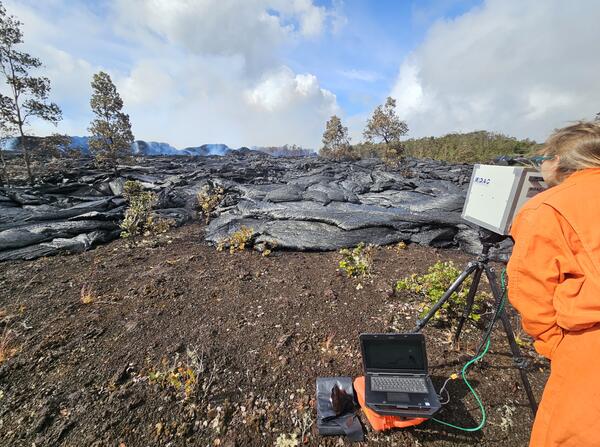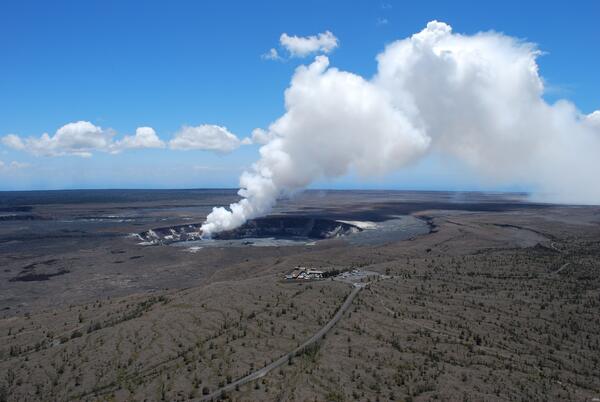Volcanic gas measurements during the 2024 Nāpau eruption
Volcanic gas measurements during the 2024 Nāpau eruptionA USGS scientist aims the viewfinder of an infrared spectrometer to measure the chemistry of volcanic gas on the last day of the Nāpau eruption, September 20, 2024. USGS photo by P. Nadeau.

























